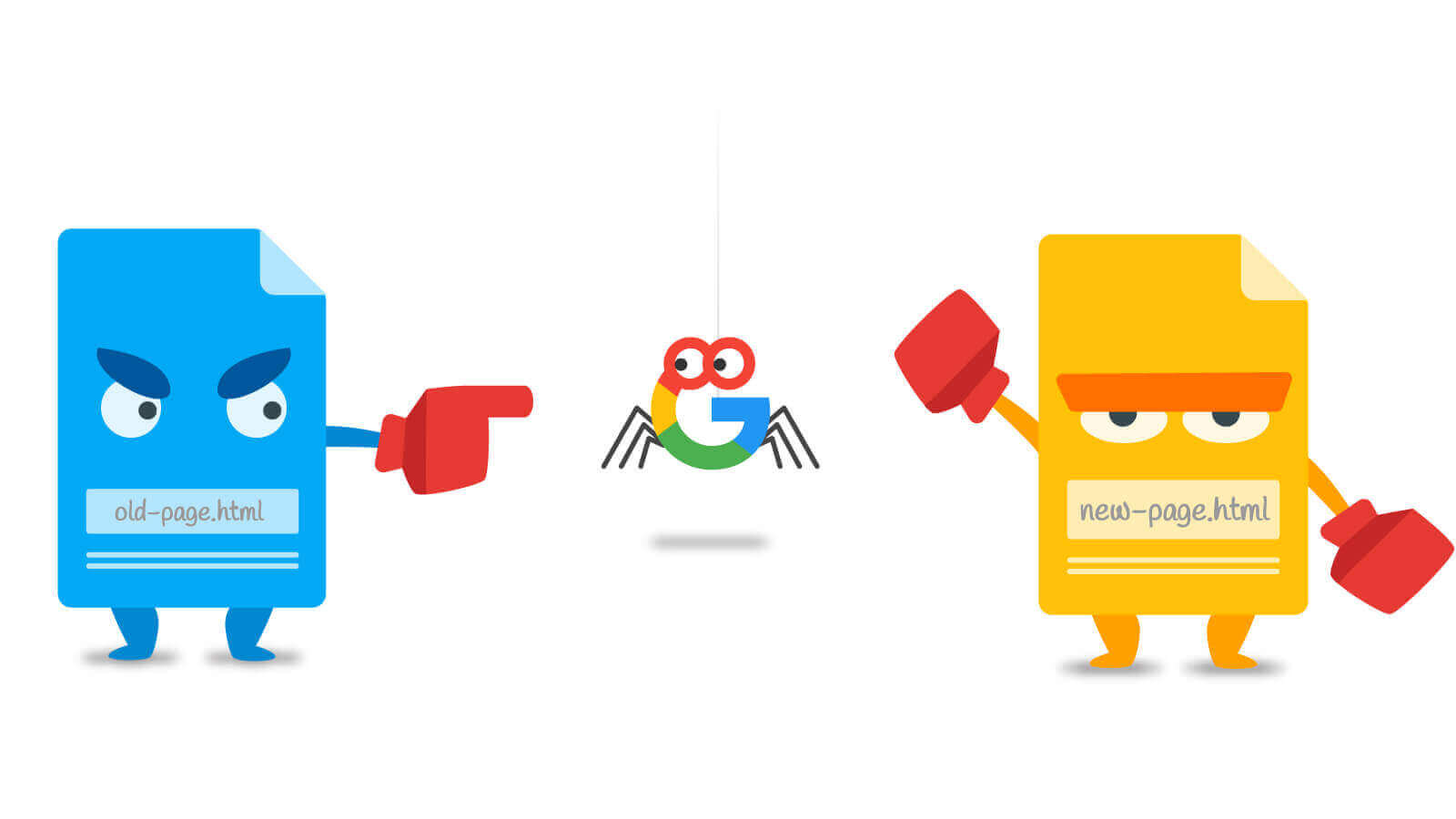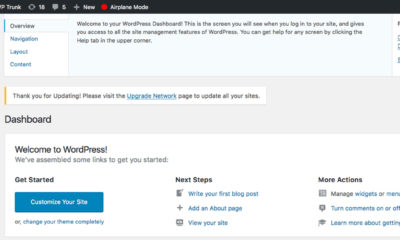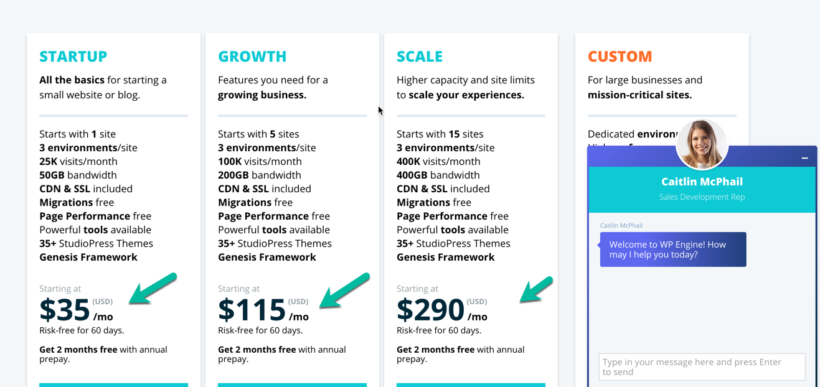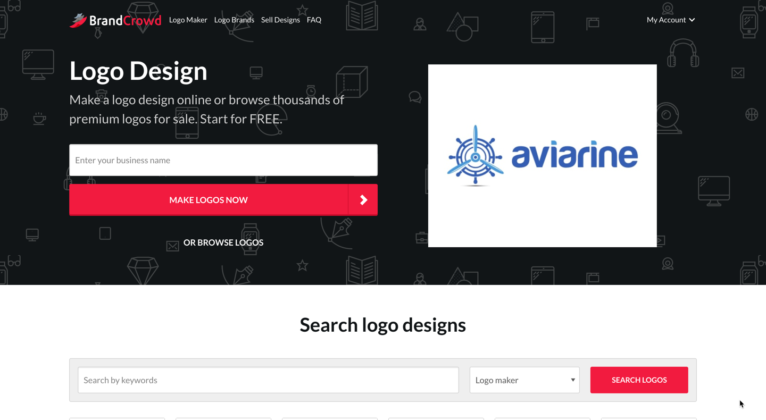

Digital Marketing Training
The critical mistake you should avoid when you schedule digital marketing training for your team
After training hundreds of clients, we see companies make this critical mistake over and over again.
We have trained hundreds of employees over the past few years and have gotten a real good feel for digital marketing training. It’s always a rewarding feeling to see employees at a company get up to speed with this “internet” thing and get more context about terms like “CPM”, “CPA”, “CPC” etc.
Whenever potential clients engage us to train their teams, a lot of them gravitate toward making one core mistake.
They want digital marketing training exclusively for the marketing team or teams.
This may not seem to make sense. Of course they want to get the marketing team up to speed, who else would they be looking to train?
I’ll get to that in a second.
Here’s the thing, most companies have made a substantial investment in digital marketing tools and technology. They buy marketing automation, analytics and CRM tools like Salesforce or Hubspot and get training from the vendors.
After that, it seems to make perfect sense to get digital marketing training just for their marketing teams.
Unfortunately, that is one of the biggest mistakes a company can make.
Without exception, in our experience, the most valuable digital marketing training your team will get will have business users in the room as well – you know, the people who actually run the business and make the money for the organization.
This is absolutely critical in my opinion and is something that a lot of digital marketing training companies will miss.
Why is it important to have the business in the room?
Here are a few reasons.
- Morale – Digital Marketing training is an excellent way for the business to share a high level roadmap of where the organization is going, new tools and the investments the company is making in the business. It helps create a feeling of excitement and hope when employees feel that management cares enough to invest in tools and training for them.
- Customer insights – The business engages directly with customers every day. They are on the front lines and know how their customers think. Training is a really great opportunity for both sides (marketing and the business) to step away from work and have that discussion. It’s amazing how much marketing teams think they know about the business and find out that the business really works differently.
- Metrics – You would be SHOCKED at the typical disconnect between what metrics marketing teams think are important and what metrics the business really cares about. Sitting in a room together typically exposes these differences and gives both sides the opportunity to hash things out.
- Business Insights – During our Digital Marketing bootcamps, the business gets an opportunity to see how marketing works and it gives them greater insights into how much value the marketing team is adding. Likewise, it’s critical for the marketing team to get a feel for how the business really works, how their customers really behave and how the business is run.
- Respect, empathy and heightened productivity – Getting a chance to see into each other’s areas of expertise actually creates a sense of unity, respect and empathy. We see marketing team members really engage well with the business and generate new ideas about how to market the business – often scheduling meetings right then and there to discuss after training is over.
- Executive feedback – Because we are contractors, we find that we get the most candid conversations about the business and employee perceptions about marketing effectiveness. Employees share things with our instructors that they are too intimidated to share with management. This is one of the reasons we present an after-training overview to our sponsor covering all the highlights and recommendations from the session.
The bottom line
Companies spend a lot of money to have us train their employees. Executives definitely get a much higher ROI when they include business employees in digital marketing training classes.
If you’re looking for comprehensive digital marketing training, contact us at https://www.LearnAboutTheWeb.com.

Digital Marketing Training
13 Steps To Building A Profitable High Traffic Technology Blog – Part five – WordPress Hosting
This is part five of my blueprint that will help you begin the process of building a high traffic profitable technology blog.

This is the fifth post in the series.
In part one, I talked about some of my experiences with some of the successful high traffic websites I actually built.
In part two, I shared a little about my belly of the whale strategy, a methodology I use to identify potential software niches to get into.
In part three, I talked about the importance of putting together a baby business plan.
In part four, I described the importance of not wasting time on a logo.
This is part five of the blueprint that will help you begin the process of building a high traffic profitable technology blog.
Today I want to recommend WordPress Hosts to you.
What is a WordPress Host?
A WordPress Host or hosting company is simply the company that hosts your WordPress website files. There are a ton of companies out there that do web hosting but here is everything you need to know in a concise package.
To cut a long story short, there are 2 ways to deal with hosting for WordPress if you’re new to building a business.
- The dumb way – get regular hosting and figure out all the tweaking and maintenance.
- The easy and efficient way – with managed hosting.
What is WordPress Managed Hosting?
Managed hosting is exactly what it sounds like – hosting that is managed for you. God I wish I knew this when I started 15 years ago.
You see, a WordPress website has more parts that need maintenance than most people understand.
When you’re building an online business, you need to worry about the following:
- The WordPress installation
- WordPress version updates
- WordPress environments
- The database
- FTP/SFTP
- PHP
- The theme
- MySQL
- Plugins
- Performance
- The CDN (if you’re savvy enough to manually install one)
- Hacking and security
- Images
and more..
When I started out building websites, I had to learn how to manage all this stuff at once and ended up paying contractors to handle one thing here, then another thing there etc. etc.
It adds up and even worse…
It’s a massive distraction from your business!
Most people don’t want to know this stuff and more importantly, don’t need to know all this stuff.
That’s where a good WordPress Managed Host comes in.
The role of a good WordPress Managed Hosting company
It’s real simple, a good WordPress Managed Hosting company will have one goal and one goal alone – to keep you protected from all the bullshit you don’t have to worry about.
They help you with the install, troubleshooting becomes their problem 100%, they worry about performance, security is all their business, on and on it goes.
At the end of the day, they allow you to focus on your business.
While there are a few good hosting companies out there, I only have one recommendation.
WP Engine – Link here
I’ve been on their platform for years and can’t say without equivocation, I couldn’t stay in business without their company.
They are reasonably priced, they have 24/7 chat support, they have the most pleasant staff in the industry and they look after their customers. In addition, their control panel makes site management on the back end a breeze.
You can learn more here.
A managed WordPress company allows you to stay focused on your core business and that is invaluable.
It’s really that simple.
Head to their site and sign up for a reasonably priced hosting package and you’re in good shape.
In the next article, I’ll show you what WordPress Themes I recommend for you to get started quickly.
Enjoy!
Digital Marketing Training
13 Steps To Building A Profitable High Traffic Technology Blog – Part Four – your logo
This is part four of my blueprint that will help you begin the process of building a high traffic profitable technology blog.

This is the fourth post in the series.
In part one, I talked about some of my experiences with some of the successful high traffic websites I actually built.
In part two, I shared a little about my belly of the whale strategy, a methodology I use to identify potential software niches to get into.
In part three, I talked about the importance of putting together a baby business plan.
This is part four of the blueprint that will help you begin the process of building a high traffic profitable technology blog.
Today I want to teach you how to get a logo for your business.
What is a logo?
Simply put, a logo is a symbol or other design adopted by an organization to identify its products, uniform, vehicles, etc. You are obviously familiar with some of the more famous ones.
The importance of a good logo
Logos are relatively important for an online business but their value is misunderstood by most online entrepreneurs. A lot of people starting out in this business obsess about the logo.
- What color should it be?
- What size?
- What tagline?
- What image?
- Vertical or horizontal?
I brought a friend along to help you.
As my friend the Rock just told you – NONE of this matters.
If that sounds like anathema to you I’m wagering that this is your first Rodeo and you still have time for all that quaint nonsense.
Let me be clear. At this stage in the game, your logo does not matter one bit.
What this does not mean
- Doesn’t mean you should have an ugly logo.
- Doesn’t mean you should pay ZERO attention to it.
- Doesn’t mean that you should not have one at all.
What this does mean
- Does mean that you should acknowledge this task is low priority.
- Does mean that you should spend no more than 2 days on this task.
- Does mean that after 2 days, your logo concept should be “good enough”
- Does mean that this is a task that you should come back to.
So this begs the question..
Should I buy a logo or design one myself?
Great question – easy answer.
If you have the skills, put one together in less than 48 hours. If not, buy one.
This begs the next question..
How much should I pay for a logo?
Great question – yet again another easy answer.
50 dollars.
No more than 50 bucks is what you should spend on a logo because quite frankly, anything more is a waste of money.
This begs yet again the next question..
Where should I get this new logo designed?
I would have given you a different answer a month ago but I found a really cool place where you can actually get your logo design for cheap.
It’s called BrandCrowd.
This is a really cool service where you can buy or alter really cool logos for reasonable prices.
While you can spend more than $1000 to buy a logo, that would be dumb. Pick something cool, modify it and keep it moving.
I did this in 3 hours for another site I’m building – https://www.laptopvideoreviews.com.
This took 3 hours and cost me $45. Logo done. I recommend BrandCrowd because it’s really easy to use and simple to get a good logo done.
Summary
When you start out in this business, a logo can drive you CRAZY and you can spend months trying to get the right colors and branding and sizes etc.
FOCUS ON YOUR BUSINESS!
Don’t get distracted because here’s the secret – you can always double back and get a better logo later. It’s better to have a viable business and a crappy logo than a beautiful logo and a failed business.
It’s simple.
In the next article, I’ll show you what WordPress Themes I recommend for you to get started quickly.
Enjoy!
Digital Marketing Training
13 Steps To Building A Profitable High Traffic Technology Blog – Part Three – the baby business plan
This is part three of my blueprint that will help you begin the process of building a high traffic profitable technology blog.

This is the third post in the series.
In part one, I talked about some of my experiences with some of the successful high traffic websites I actually built.
In part two, I shared a little about my belly of the whale strategy, a methodology I use to identify potential software niches to get into.
This is part three of my blueprint that will help you begin the process of building a high traffic profitable technology blog.
Today I want to share with you the importance of creating a business plan but not a regular business plan.
I call this…
The Baby Business Plan
Anyone who has written a business plan knows that to do it properly, it’s exhausting and requires a certain level of expertise and sophistication.
There are businesses and vendors who specialize in helping entrepreneurs write business plans. They are that complex.
Here’s the problem.
For most online entrepreneurs, at this stage in the process, that’s too much work. It just doesn’t make sense.
IMPORTANT – I’m not trying to say that entrepreneurs don’t need a plan, I’m saying at this stage, digital entrepreneurs don’t need the formal rigor of an exhaustive business plan.
You need a baby business plan.
What is a Baby Business Plan?
A baby business plan is a scaled down vision of your plans for your business. Simply put, you need to think about how this website or web based app will make money.
This is different from a real business plan because at this point you simply don’t need all that complexity.
So, let’s get to the meat and bones.
What are the elements of a Baby Business Plan?
A Baby Business Plan has 9 elements:
- Business name ( and URL)
- Business concept (Full description)
- Technology components (list and price)
- Labor costs to start
- Ongoing labor
- Marketing plan
- Marketing costs
- Monetization plan
- Maintenance costs
Like I said, this is a scaled down version that you can put together real quickly.
Let’s do a quick example. Let’s do a Baby Business Plan for a fake domain – http://myloveofstamps.com/.
So if I was the entrepreneur, I would create a plan that looked roughly like this.
- Business name: My Love Of Stamps (http://myloveofstamps.com/)
- Business concept (A website that will bring together fans and stamp collectors all around the world. We will have forums, lists and …..)
- Technology components:
- Hosting: WP Engine
- WordPress
- Thrive Themes
- etc. etc.
- Labor costs to start:
- 99 Designs web design – $899
- Web Development to build – $500
- Outsourced SEO – $200
- 100 articles writer: $1000
- etc. etc.
- Ongoing labor:
- Monthly writer – $400
- Monthly SEO – $50
- etc. etc.
- Marketing Plan:
- etc. etc.
- Marketing costs
- Facebook ads $50/month
- Twitter Promo: $20/month
- etc. etc.
- Monetization plan:
- Adsense on site
- Stamp ebook that we will develop
- Amazon ads
- Stamps.com affiliate
- etc. etc.
- Maintenance costs
- WP Engine $35/month
- Clicky Analytics $9/month
- etc. etc.
And so on and so forth…
Baby Business Plan – The format
Real simple. Word or Excel file. No presentation no graphics nothing too formal.
At this point you just want to have something that is a living document that you can continue to update as needed.
Why is this step critical?
Simple.
Because a lot of online tools are free or cheap and easy to use, it’s really easy to get started on an idea and build a proof of concept that can turn into a real site quickly.
This step helps you avoid two critical mistakes:
- Overspending on an idea that you have. Once you have all these costs listed you can start to plan and make sure you actually have the money to support this business.
- Validation – sometimes an idea sounds good in theory but when you actually write it out you start to see that it makes no business sense or requires too much money to be a viable business.
This step is a good step to keep you disciplined and focused. You need to write down you plan and start to internalize and share it with friends or people you respect so they can pick it apart and criticize it.
Better for an idea to die here than after you have spent lots of hours and lots of $$$ on it.
In the next installment in the series, I’ll show you how to quickly get a logo done.
Let me know if you think I missed anything here.
-

 Website Performance6 years ago
Website Performance6 years agoWebsite Optimization Tips – Optimizing the Order of Styles and Scripts
-

 Web Content7 years ago
Web Content7 years agoHow to test a copywriter
-

 Website Performance6 years ago
Website Performance6 years agoWordPress Performance Tips – Enable Keep Alive
-

 Web Content10 years ago
Web Content10 years ago7 Basic Principles Of Good Writing
-

 URL Redirects7 years ago
URL Redirects7 years agoSpeeding Up WordPress – Avoid Landing Page Redirects
-

 Digital Marketing Training6 years ago
Digital Marketing Training6 years ago13 Steps To Building A Profitable High Traffic Technology Blog – Part Four – your logo
-

 Digital Marketing Training6 years ago
Digital Marketing Training6 years ago13 Steps To Building A Profitable High Traffic Technology Blog – Part five – WordPress Hosting
-

 Digital Marketing Training6 years ago
Digital Marketing Training6 years ago13 Steps To Building A Profitable High Traffic Technology Blog – Part Three – the baby business plan


















